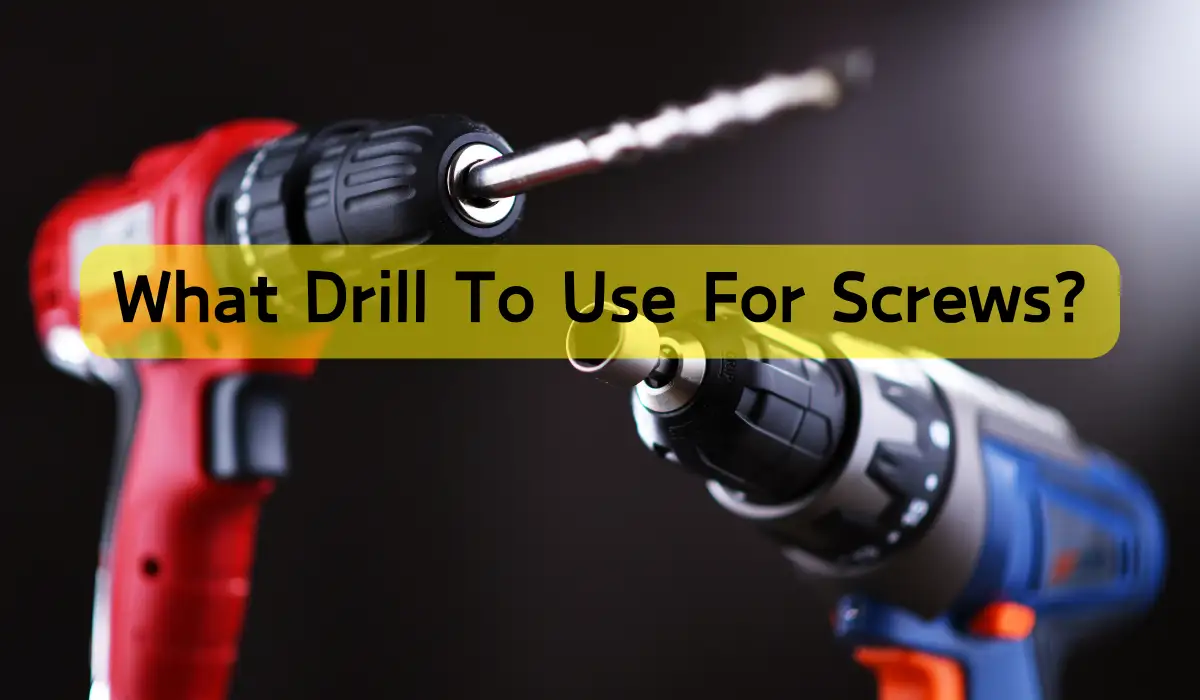You need to know that a drill’s power is determined by its wattage, voltage, and amp rating, which work together to measure its ability to handle tough tasks efficiently. A higher wattage drill can tackle thicker wood or metal, while a higher amp rating means it can sustain power over time. When choosing a drill, consider the type of projects you’ll be working on and the power you need. If you’re looking for a drill that can handle demanding tasks, look for one with high watts and amps. As you explore your options, you’ll discover more about what makes a drill truly powerful.
Jump to
Key Takeaways
• A drill’s power is measured in watts (W), with higher wattage indicating a drill can handle tougher tasks like drilling through thick wood or metal.
• Amps measure the flow of electric current, with higher amps indicating a drill can sustain power over time.
• Volts measure electrical ‘pressure’, with higher voltage drills maintaining speed and torque under heavy loads.
• Torque measures rotational force, with higher torque drills suitable for demanding tasks like drilling through thick metal or concrete.
• Check specifications like voltage, ampere-hours, and watt-hours to determine a drill’s power output and performance.
Understanding Drill Power Measurements
When you’re shopping for a drill, you’ll often come across terms like ‘watts‘ and ‘amps‘ that describe its power, but what do these measurements really mean, and how do they impact your drilling experience?
In simple terms, watts (W) measure the drill’s total power output, while amps (A) measure the flow of electric current. Think of it like water flowing through a hose: watts represent the total amount of water (power), while amps represent the rate at which the water flows (current).
A higher wattage drill can handle tougher tasks, like drilling through thick wood or metal, while a higher amp rating indicates the drill can sustain that power over time.
For example, if you need to drill multiple large holes in a thick beam, a drill with high watts and amps will get the job done faster and more efficiently. On the other hand, if you’re just doing some light DIY work, a lower-powered drill might suffice.
Volts and Amps: What’s the Difference
Volts (V) and amps (A) are often mentioned alongside watts (W) when researching drills, but what’s the difference between these two fundamental measurements?
To put it simply, volts measure the electrical ‘pressure’ or force that drives electric current, while amps measure the flow rate of that current.
Think of it like water flowing through a hose: volts are the water pressure, and amps are the volume of water flowing through the hose.
In the context of drills, volts determine how efficiently the motor can produce torque, or rotational force.
A higher voltage drill can maintain its speed and torque under heavy loads, making it more suitable for demanding tasks.
On the other hand, amps determine the drill’s overall power consumption.
A higher amp rating means the drill can handle more power, but it also increases the risk of overheating.
When choosing a drill, consider the type of tasks you’ll be performing.
If you’ll be driving large screws or drilling through thick materials, look for a drill with a higher voltage rating.
If you’ll be working with smaller tasks, a lower amp rating might be sufficient.
Understanding the difference between volts and amps will help you make an informed decision when selecting the right drill for your needs.
Measuring Power in Watts
The simplest way to gauge a drill’s overall performance – its ability to get the job done efficiently – is to look at its power rating in watts (W). Watts measure the rate at which a drill uses energy, and a higher wattage drill can handle tougher tasks and larger materials.
Think of it like a car’s horsepower – the more watts, the more ‘oomph’ your drill has.
When shopping for a drill, you’ll often see wattage ratings ranging from around 200W for small, lightweight drills to over 1,000W for heavy-duty industrial models.
A 400W drill might be suitable for DIY projects like hanging pictures or assembling furniture, while an 800W drill would be better suited for drilling through thick metal or concrete.
Torque and Its Impact on Power
As you explore further into a drill’s performance, you’ll discover that torque – a measure of rotational force – plays a crucial role in determining its overall power and ability to tackle demanding tasks.
Think of torque like the effort you need to apply to turn a stubborn screw or drill through a thick piece of wood. The more torque a drill has, the more force it can apply, making it better suited for heavy-duty tasks.
Torque impacts a drill’s performance in the following ways:
- Drilling through tough materials: A drill with high torque can easily bore through thick metal, concrete, or hardwood, while a low-torque drill might struggle or stall.
- Driving large screws: High-torque drills can drive large screws quickly and efficiently, saving you time and effort on construction or DIY projects.
- Handling heavy loads: Drills with high torque can maintain their speed and performance even under heavy loads, ensuring you can complete tasks efficiently and effectively.
Brushed Vs Brushless Motor Technology
When it comes to harnessing the power of torque, the type of motor technology used in your drill can make all the difference, and that’s where the debate between brushed and brushless motors comes in. As you’re shopping for a drill, you’ll likely come across these two terms, but what do they mean, and which one is right for you?
The main difference between brushed and brushless motors lies in their internal mechanics. Brushed motors use carbon brushes to transfer energy, while brushless motors use electronic controllers to regulate power.
Here’s a breakdown of the key differences:
| Motor Type | Maintenance | Efficiency |
|---|---|---|
| Brushed | Higher (brushes wear out) | Lower (energy lost as heat) |
| Brushless | Lower (fewer moving parts) | Higher (less energy loss) |
| Hybrid | Medium (some wear, some efficiency) | Medium (balance of both) |
In general, brushless motors are more efficient and require less maintenance, but they’re often pricier. Brushed motors, on the other hand, are more affordable but may need more upkeep. Consider your needs and budget to decide which type is best for you.
Power Ratings: Peak Vs Continuous
Your drill’s power rating is more than just a number – it’s a measure of its ability to get the job done, and understanding the difference between peak and continuous power is essential to choosing the right tool for your project.
Peak power refers to the maximum power output a drill can produce in short bursts, typically during heavy-duty tasks like driving large screws or drilling through thick materials. This is often the number you’ll see advertised, but it’s not the whole story.
Continuous power, on the other hand, is the sustained power output the drill can maintain over an extended period. This is a more realistic representation of the drill’s performance during everyday use.
- Peak power is for heavy-duty tasks: If you need to drive a large screw or drill through thick metal, peak power is what you need.
- Continuous power is for everyday use: For most tasks, like drilling small screws or driving small fasteners, continuous power is what matters.
- Look for both numbers: When shopping for a drill, make sure to check both peak and continuous power ratings to get a complete picture of its capabilities.
Speed and Gear Settings Matter
You’ll get more out of your drill’s power ratings if you pair them with the right speed and gear settings, which can substantially impact the tool’s performance and the quality of your work.
Think of it like driving a car – you need to be in the right gear to get the most out of your engine’s power. Similarly, your drill’s speed and gear settings can either tap its full potential or hold it back.
For example, if you’re drilling through a tough material like concrete, you’ll want to use a lower gear setting to apply more torque and get the job done efficiently.
On the other hand, if you’re working with softer materials like wood or drywall, a higher gear setting will give you the speed you need to make quick work of your task.
By adjusting your speed and gear settings to match the task at hand, you’ll be amazed at how much more effectively your drill can perform.
Battery Type and Power Output
Match your drill’s power output to the task at hand by choosing the right battery type, as it can substantially impact the tool’s performance and runtime.
When selecting a drill, you’ll typically come across three main battery types: nickel-cadmium (Ni-Cd), nickel-metal hydride (NiMH), and lithium-ion (Li-ion). Each has its strengths and weaknesses, which you should weigh based on your specific drilling needs.
When evaluating a drill’s power output, think about the following three key factors:
Voltage: A higher voltage usually means more power and faster drilling. Most drills range from 12 to 20 volts.
Ampere-hours (Ah): A higher Ah rating indicates a longer battery life. If you plan to use your drill for extended periods, look for a higher Ah rating.
Watt-hours (Wh): This measures the total energy stored in the battery. A higher Wh rating generally means more power and longer runtime.
Frequently Asked Questions
Can a Drill’s Power Be Affected by Its Weight and Size?
You might think a heavier drill is more powerful, but that’s not always true. Weight and size don’t directly impact a drill’s power, it’s the motor’s wattage and torque that matter.
Do More Expensive Drills Always Mean More Power and Quality?
You might assume that a higher price tag always means more power and quality, but that’s not always the case – sometimes you’re paying for brand name or extra features, not necessarily more power or better performance.
How Does the Type of Drill Bit Affect Drilling Power?
You’ll find that the type of drill bit you use substantially affects drilling power, as different bits are designed for specific materials, such as wood, metal, or concrete, and some bits are more efficient than others at transferring drill energy.
Can I Use a Drill in Cold Temperatures Without Losing Power?
You can use a drill in cold temperatures, but you’ll likely notice a slight power drop due to battery performance. Keep batteries warm before use, and consider using a cold-weather battery or a drill with cold-temperature ratings.
Are There Any Safety Precautions to Take When Using a Powerful Drill?
When using a powerful drill, you should wear protective gear like gloves and safety glasses, maintain a firm grip, and keep loose clothing and long hair tied back to avoid accidents and injuries.




